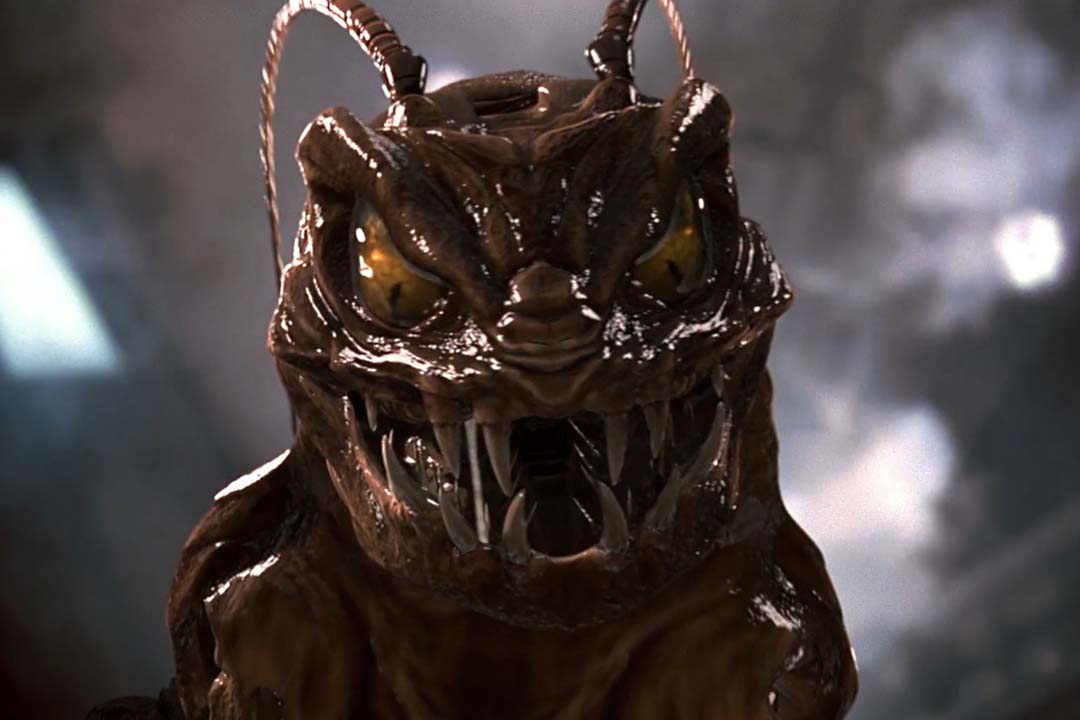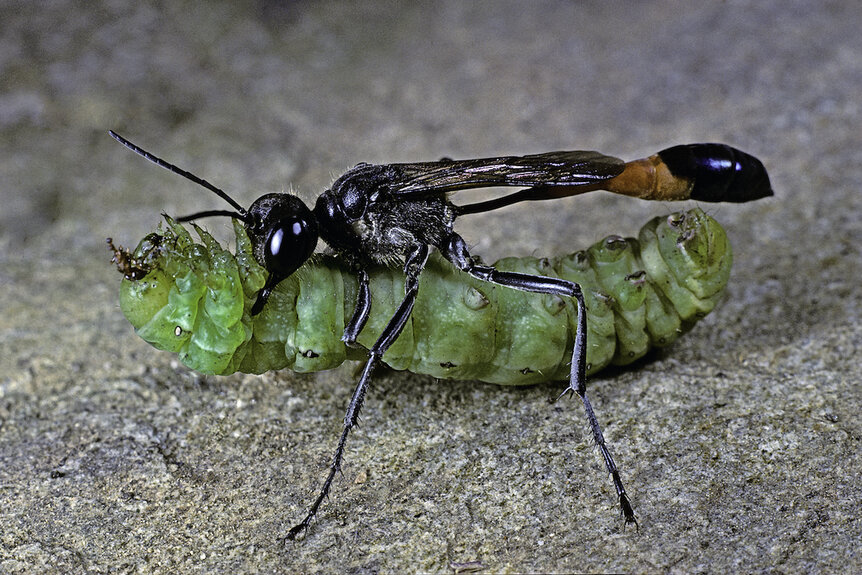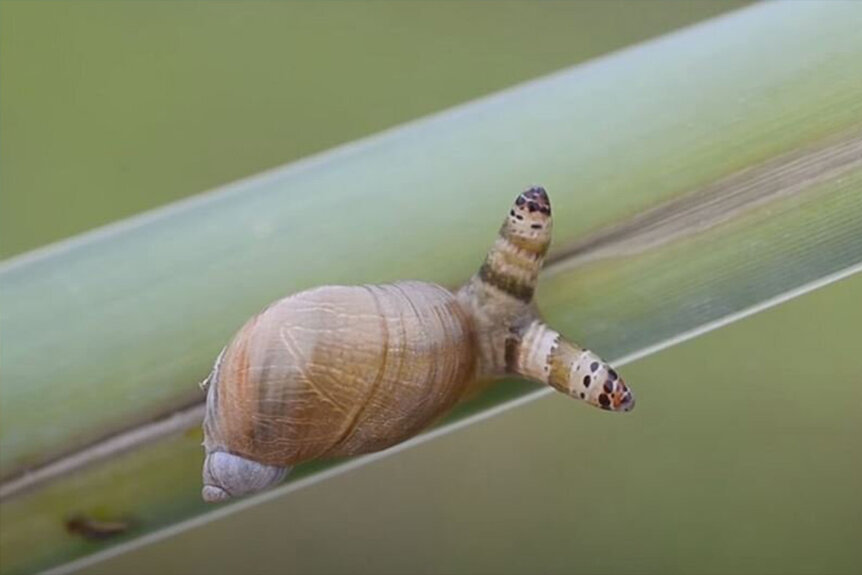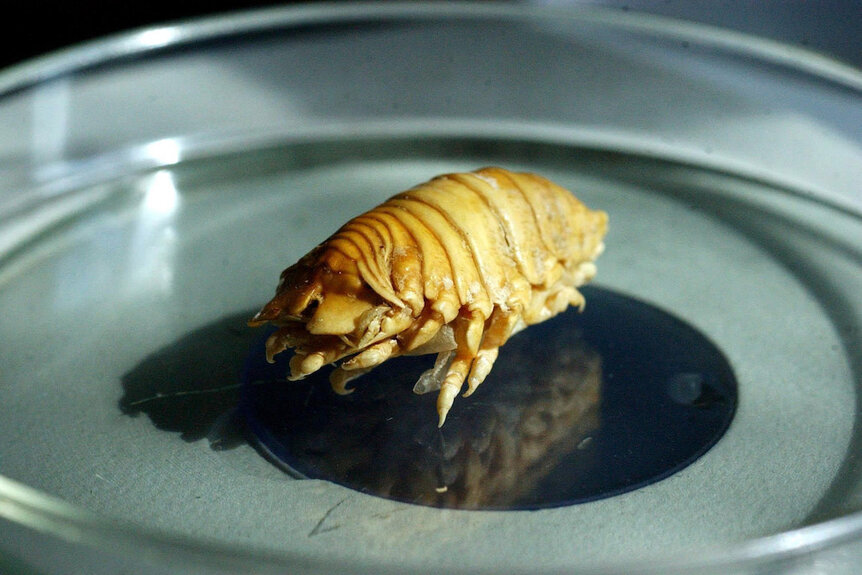Create a free profile to get unlimited access to exclusive videos, sweepstakes, and more!
Making an Edgar suit, the science behind 'Men in Black's insectoid aliens
Our very own body-snatching bugs, right here at home!

In the 1997 extraterrestrial adventure Men in Black (now streaming on Peacock!), the newly initiated Agent J (Will Smith) and his partner Agent K (Tommy Lee Jones) are tasked with protecting the Earth and the wider galaxy from the nefarious machinations of an insectoid alien. Knowing that it will be arrested or killed if it waltzes onto our planet without a disguise, the alien bug takes the life of a farmer named Edgar so that it can walk around in his skin. That they pulled that off in a kids’ movie is incredible.
Despite the bug’s mediocre skill at piloting its fleshy mech suit, it turns out to be a good disguise. While some folks avoid the alien in the Edgar suit because of their unusual behavior, no one outside of a very few — most of them MIB personnel — ever suspect the bug’s true nature until it’s too late.
It’s unlikely, though never impossible, that some alien upstart is right now planning to abscond with your body or the body of a loved one in order to initiate an interstellar war. While that would present a level of threat heretofore unencountered, you don’t have to look to the stars to find flesh-stealing insectoid body horror. We’ve got plenty of that right here at home.
PARASITOID WASPS
When you really get down to the nuts and bolts, that alien bug was little more than an interstellar parasite, using the body of its host to an incredible degree. Our own planet is no stranger to parasites. In fact, I hate to be the person to tell you this, but there’s a good chance that you have a parasite or two living inside of you right now.
Fortunately, most of the parasites you’re likely to encounter are largely benign and you can live in harmony with them without any major problems. Even those that aren’t as friendly can usually be taken care of with mild to moderate medical intervention. But that isn’t true of the rest of the animal kingdom.
Parasitic wasps inhabit a special place in the kingdom of parasites, thanks to the gruesome ways in which they use their hosts. There are tens of thousands of parasitic wasp species all over the world, many of whom have specialized hosts, but the experience is more or less the same. An adult wasp locates a suitable host, often but not always the larvae of some other arthropod, and lays their eggs on or inside of the host.
RELATED: Despite longstanding rumors, the Worm guys in 'Men in Black' are not related to Jabba the Hutt
When eggs are laid on the host, the wasp paralyzes it immediately, where it will wait alive but unmoving for the larvae to hatch. When they emerge, they have a ready and waiting food supply which they summarily consume alive. When eggs are laid inside of the host, the process unfolds more slowly but with at least twice as much horror. A host captured by this kind of wasp will be allowed to escape and continue on with their life, believing incorrectly that they narrowly escaped death. They will continue to eat and grow, moving ever onward from one stage of development to the next. Without their notice, the wasp eggs are growing too. When they hatch, and they will, the wasp larvae eat their host from the inside and a new adult wasp emerges from the carcass.
WILD-EYED SNAILS
For some parasites, finding a single host isn’t enough. These species go through multiple stages of development, each one requiring the environment inside of a different host, which means they need to come up with some weird strategies to get eaten over and over again.
One such parasite is the flatworm Leucochloridium. The life cycle begins as an egg hidden in some bird droppings. The leavings of birds might not sound appetizing to you, but somebody has to eat them, and that somebody is a snail.
Once ingested by the snail, the eggs make their way to an organ in the digestive tract known as the hepatopancreas; it’s a sort of hybrid liver and pancreas. There, the egg grows into a sporocyst and sprouts a bunch of branching tubes, some of which become pulsating, striped broodsacs. Eventually, the parasite can make up roughly 20% of the snail’s total weight and those broodsacs reach through the body until they reach one or both of the eyestalks.
As a result, the snail’s eyes become swollen and pulse rhythmically in a display which looks startlingly like a grub begging to be eaten by a passing bird. That is by design. For the parasite to continue to grow, it needs to get out of the snail and into a bird. Ringing the proverbial dinner bell for nearby birds is a great way to make that happen. Once inside of a bird, the worm lodges itself in the cloaca and develops into an adult. Finally, it reproduces asexually, releasing eggs in the bird’s feces and the cycle continues.
LOUSE GOT YOUR TONGUE
This lovely aquatic parasite doesn’t steal its host’s entire body, just a part of it, but it might be the most horrifying part. Cymothoa exigua is an aquatic isopod (think potato bug, but a little larger) which has decided that the ocean is too big and finding its own food is too much work. Instead of scouring the world’s oceans for their next meal, this tiny louse sets up shop inside the mouth of a fish. But first, it has to remove the tongue.
When young, the little isopods crawl inside the mouth of their chosen fish and get to work. What the fish might have thought of as a free snack soon turns to bloodshed. Using its claws, the parasite meticulously severs the blood vessels to the tongue, tucks itself into a corner, and waits. In short order, the tongue begins to die from lack of blood supply, the tissue necrotizes, and the tongue falls off.
RELATED: How a Jewish scholar from the Middle Ages inspired 'Men in Black 3's poignant time travel story
With the furniture rearranged, the isopod attaches itself to the tongue stub and effectively becomes a new tongue for the fish. Some species feed directly on the blood supply while others feed on mucus the fish produces. In most cases, the presence of the parasite has no other negative effects on the host and it lives out the rest of its life more or less normally. Except, of course, for the independent organism playing house inside of their mouths.
All things considered, killing Edgar at the outset and simply using his skin almost seems like a mercy. Our own Earthly parasites like to draw things out. Glimpse a different world, maybe even a better one, in Men in Black, streaming now on Peacock!





























